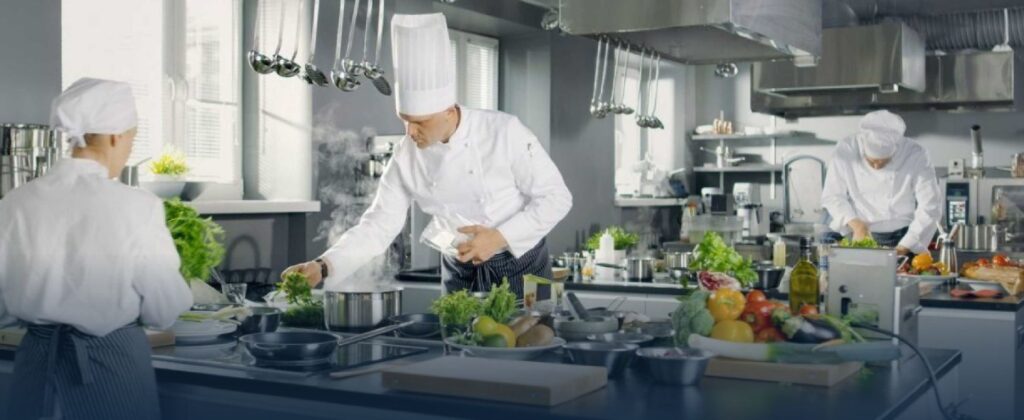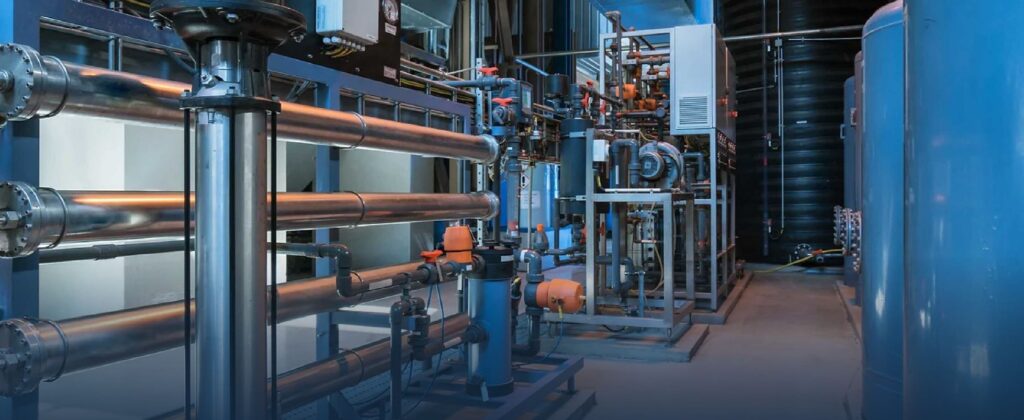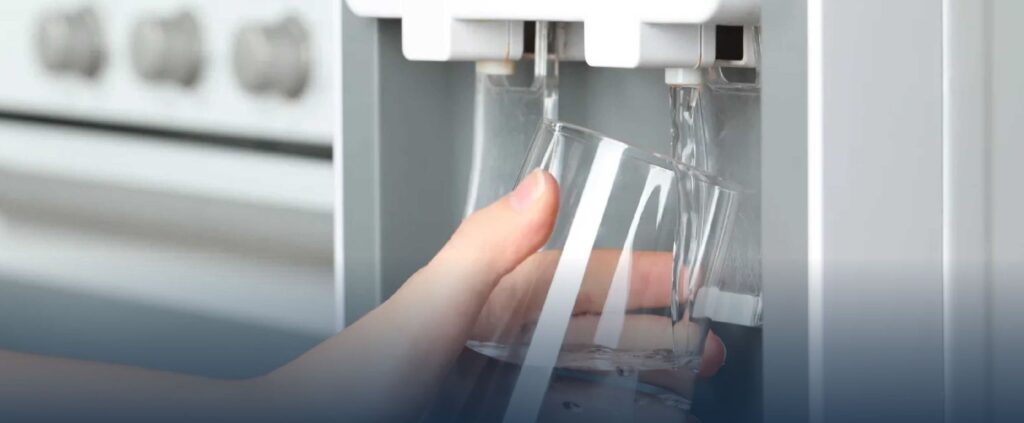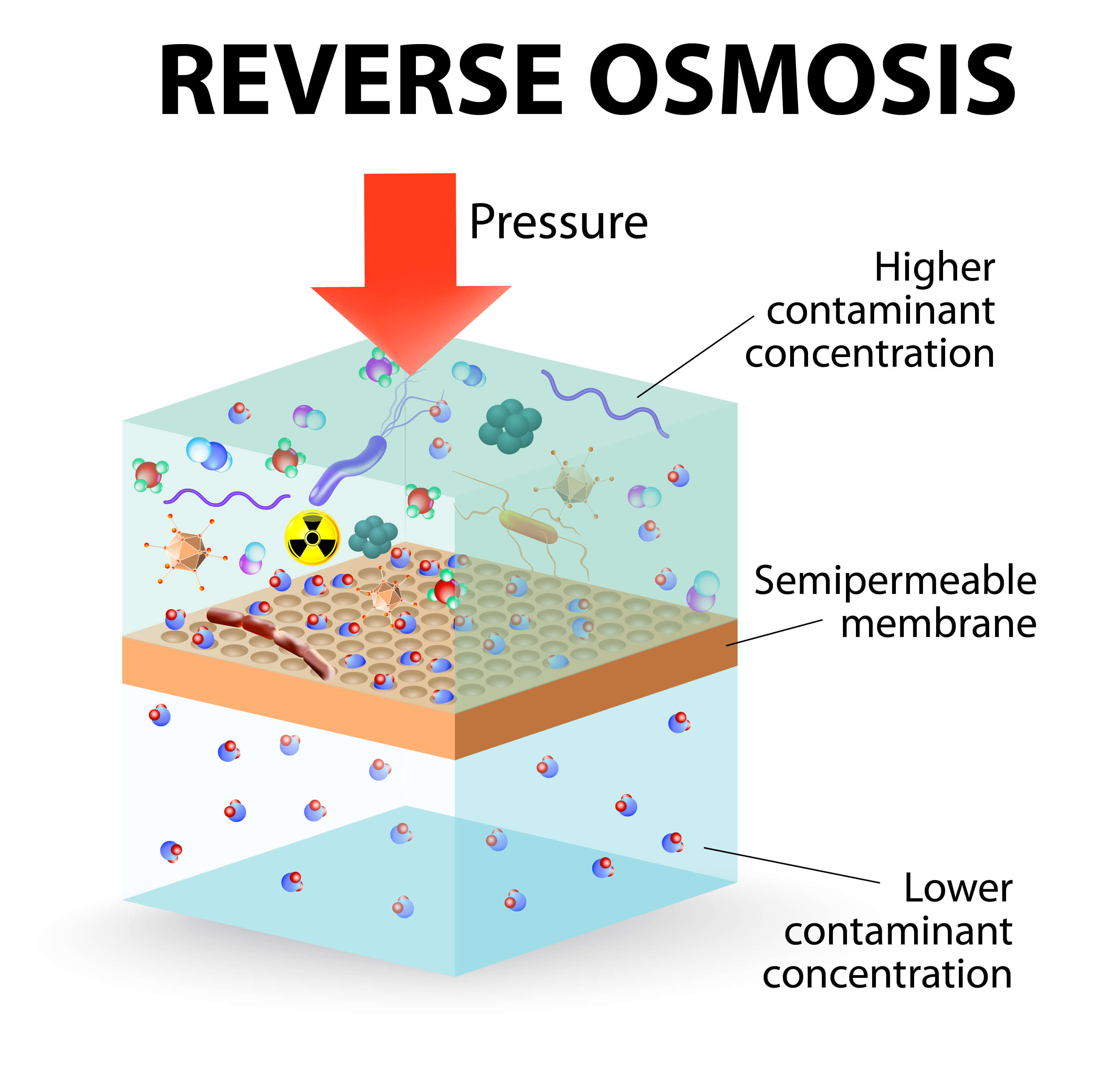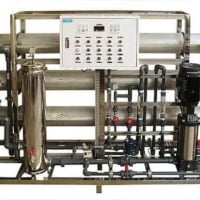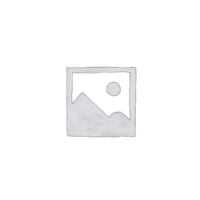Description
 Pacific Water Technology supplies turnkey equipment package solutions for a whole host of applications utilising worldclass cross-flow membrane filter technology. We design and build Industrial Reverse Osmosis systems (RO Systems) ranging in size from 5000 litre/ day to 500 000 litre/day and that can remove up to 99.5% of dissolved salts and virtually all colloidal and suspended matter from the most challenging feed water including municipal, brackish, and sea water applications. RO units produce a high-quality water yield at a low cost compared to other purification processes. Our Industrial Reverse Osmosis systems are custom designed specifically for your water treatment needs by an experienced team of application, mechanical and chemical engineers. We build the RO system using only high quality components that will provide reliable long-term operation. They arrive at your site hydrostatically tested and ready to produce water with complete documentation and operator training. We also provide the pre-treatment equipment and chemistry required to ensure optimal performance and life span of your RO membranes.
What is Reverse Osmosis(RO)?
It is important to understand that an RO system employs cross filtration rather than standard filtration where the contaminants are collected within the filter media. With cross filtration, the solution passes through the filter, or crosses the filter, with two outlets: the filtered water goes one way and the contaminated water goes another way. To avoid build up of contaminants, cross flow filtration allows water to sweep away contaminant build up and also allow enough turbulence to keep the membrane surface clean. What will Reverse Osmosis remove from water? Reverse Osmosis is capable of removing up to 99%+ of the dissolved salts (ions), particles, colloids, organics, bacteria and pyrogens from the feed water (although an RO system should not be relied upon to remove 100% of bacteria and viruses). An RO membrane rejects contaminants based on their size and charge. Any contaminant that has a molecular weight greater than 200 is likely to be rejected by a properly running RO system (for comparison a water molecule has a MW of 18). Likewise, the greater the ionic charge of the contaminant, the more likely it will be unable to pass through the RO membrane. For example, a sodium ion has only one charge (monovalent) and is not rejected by the RO membrane as well as calcium for example, which has two charges. Likewise, this is why an RO system does not remove gases such as CO2 very well because they are not highly ionized (charged) while in solution and have a very low molecular weight. Because an RO system does not remove gases, the permeate water can have a slightly lower than normal pH level depending on CO2 levels in the feed water as the CO2 is converted to carbonic acid. The total alkalinity can also be reduced by the RO process and hence yielding aggresive water that can be corrosive to most metals. Reverse Osmosis is very effective in treating brackish, surface and ground water for both large and small flows applications. Some examples of industries that use RO water include pharmaceutical, boiler feed water, food and beverage, metal finishing and semiconductor manufacturing to name a few. We supply standard equipment packages that comply to raw water specifications as outlined below. For water specifications that do not comply these specifications, we add a pre-filtration package to ensure optimum performance of the RO-system and limit membrane fouling. Membrane fouling is the main cause of permeate flux decline and loss of product quality in reverse osmosis (RO) Systems, so fouling control dominates RO system design and operation. Sources of fouling can be divided into four principal categories: scale, silt (particular), bacteria (bio fouling, growth of bacteria) and organic fouling (oil, grease). Fouling control involves pre-treatment of the feed water to minimize fouling as well as regular cleaning to handle fouling that still occurs. Fouling by particulates (silt), bacteria and organics generally affects the first modules in the plant the most. Scaling is worse with more concentrated feed solutions, therefore the last modules in the plant are most affected, because they are exposed to the most concentrated feed water. Silt density Index( SDI) Silt is composed by suspended particulates of all types that accumulate on the membrane surface. Sources of silt are organic colloids, iron corrosion products, precipitated iron hydroxide, algae, and fine particular matter. Silt Density Index testing is a widely accepted method for estimating the rate at which colloidal and particle fouling will occur in water purification systems, especially using reverse osmosis (RO) or Nanofiltration membranes. TDS Content The primary difference between the types of water mentioned above is in the amount of total dissolved solids (TDS) they contain. Brackish water typically contains TDS in concentrations ranging from 1,000 milligrams per liter (mg/l) to 10,000 mg/l. Saline water or salt water has more than 10,000 mg/l TDS. And, brine is very salty water (TDS greater than 35,000 mg/l). Seawater typically is very salty (TDS >35,000 mg/l). As a rule of thumb, 10 PSI per 1,000 ppm of TDS contributes 10 PSI of osmotic pressure. Therefore the higher the TDS, the higher pressure required to overcome the osmotic pressure, hence the name Reverse Osmosis. System Design Aspects unique to the RO desalination process are the need for pre and post treatment of feed and product streams. Pre-treatment is required to prevent fouling, scaling and membrane degradation so as to increase the efficiency and operating life of the membrane being used for separation. Membrane fouling is the main cause of permeate flux decline and loss of product quality in reverse osmosis (RO) Systems, so fouling control dominates RO system design and operation. Sources of fouling can be divided into four principal categories: scale, silt (particular), bacteria (bio fouling, growth of bacteria) and organic fouling (oil, grease). Fouling control involves pre-treatment of the feed water to minimise fouling as well as regular cleaning to handle fouling that still occurs. Fouling by particulates (silt), bacteria and organics generally affects the first modules in the plant the most. Scaling is worse with more concentrated feed solutions, therefore the last modules in the plant are most affected, because they are exposed to the most concentrated feed water. Inert and reactive suspended materials are physically removed by coarse screens, while filtration is employed to rid the feed of fine colloidal matter or microorganisms. A chemical conditioning system is also employed to control pH and add anti-scaling compounds, which limit the build up of sparingly soluble salts and alkaline and non-alkaline scales on the membrane. Post-treatment meanwhile is implemented to remove any dissolved gases (CO2) and to stabilise the pH (achieved with Ca2+ or Na+ salts) of the pure water being produced. Feed Water Quality Requirements:
For larger units please complete our enquiry form and also submit water analysis specifications. Brackish Water Packaged Plant Generic Specifications.Chlorine Dosing System– Disinfection of feedwater Booster Pump– Delivers water at the required flow and pressure 30-40 psig. Multi-Media Filter- Multi-media filtration system is used to filter sand and sediment (turbidity) down to approximately 20 Microns. Both automatic and manual backwash option is available. Corrosion resistant, high performance composite & fiberglass tank will be used to hold the media. Activated Carbon Filter Pre-Filtration System Sodium Metabisulphite Dosing System Acid Dosing System Antiscalant Dosing System Caustic Dosing System Chlorine Dosing System UV Sterilisation System Ozone System RO SystemMembrane Housing: Corrosion resistant, fiberglass construction, 1000 psi rating. Membranes: Dow Filmtec or Fluid Systems seawater, TFC membranes. High pressure RO Pump: Multi-stage centrifugal pump, energy recovery turbine, and variable frequency drive. Motor: 415V/380V/230V/208V/120V, 50hz/60hz, single phase or three phase High pressure side piping material :316 SS Flow meters: Panel Mount Digital Flow Meters or rotameter for feed water and product water Membrane Cleaning/Flushing System Includes high flow pump, 316 SS, heater. It cleans membranes when needs, extends membrane life. Use chemicals for cleaning. Automatic cleaning/flushing. Installed with automation, valves. Etc. With common service tank for product/cleaning/flushing. | |||||||||||||||||||||||||||||||||||||||||||||||||||||||||||||||||||||||||||

